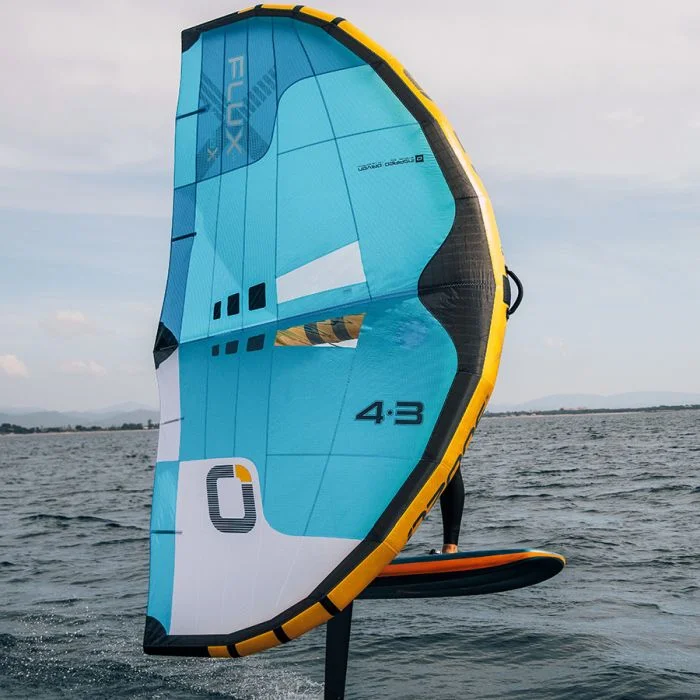 The evolution of watersports technology is a continuous loop of innovation, driven by the need for better performance in all conditions. While high-wind performance often steals the spotlight, the true measure of a wing’s engineering prowess lies in its ability to excel when the breeze is barely a whisper. This is precisely where the Ozone Flux V2 Wing Foiling Kiteboarding Wing steps onto the stage, not just as an iteration, but as a complete redefinition of what riders can expect in light wind and high-speed freeride conditions.
The evolution of watersports technology is a continuous loop of innovation, driven by the need for better performance in all conditions. While high-wind performance often steals the spotlight, the true measure of a wing’s engineering prowess lies in its ability to excel when the breeze is barely a whisper. This is precisely where the Ozone Flux V2 Wing Foiling Kiteboarding Wing steps onto the stage, not just as an iteration, but as a complete redefinition of what riders can expect in light wind and high-speed freeride conditions.
The original Flux was highly regarded, but the V2 model elevates the experience by integrating strategic material and design upgrades. Ozone has refined the high aspect-ratio shape and stiffened the airframe—thanks to a switch to a durable Teijin Triple Ripstop Dacron and an advanced airframe design. This enhanced rigidity is the key to unlocking its incredible light wind efficiency. In marginal conditions, a stiff airframe minimizes flex, translating every pump and subtle movement from the rider directly into forward drive. This allows for earlier take-offs and maintaining foil speed even when the wind threatens to drop you back into the water.
The Anatomy of Light Wind Mastery
What makes the Ozone Flux V2 Wing Foiling Kiteboarding Wing a hero for light air? The refined high aspect-ratio shape is engineered for optimal lift and reduced drag. It enables riders to point higher upwind with aggressive efficiency, conserving energy and maximizing water time. This isn’t just about getting going; it’s about fluid, high-performance freeriding. The taut trailing edge, supported by anti-flap battens, provides a level of high-speed control that was previously elusive in this category.
For the aspiring rider struggling to connect jibes and tacks in lower wind, or for the expert seeking to boost their repertoire of fluid maneuvers, the V2 offers a seamless progression pathway. The refined aerodynamics make handling intuitive, particularly during the critical moments of a tack or a jibe where momentary lulls can be detrimental. The increased stability and control mean the wing remains predictable and responsive, turning potential frustration into confident execution.
Enhanced Rider Connection and Durability
Ozone’s commitment to the rider experience is evident in the new rigid power handles. Borrowed from their Flow wing and now featuring extended, EVA-covered carbon handles, they offer maximum comfort and an immediate, direct feel. The longer front handle simplifies one-handed control, a game-changer for expressive carving and setting up for waves. The newly stiffened leading edge handle also significantly improves drift control when the wing is flagged out behind you, a crucial feature when surfing on a foil.
Furthermore, the longevity of the wing’s performance has been a focus. The unique seam layout and optimized canopy tension are designed to minimize performance drop-off over time, ensuring the wing holds its clean profile and delivers consistent power season after season. This attention to durability underscores why the Ozone Flux V2 Wing Foiling Kiteboarding Wing is considered a premium piece of equipment.
V2 vs. V1: A Clear Leap Forward
Compared to its predecessor, the V2 is noticeably stiffer and sportier, offering more responsive handling and high-speed capability with improved comfort. It sits perfectly in Ozone’s line-up, providing a high-performance freeride experience that balances the easygoing nature of the Flow with the raw power of the Flux V2 Ultra-X. Whether you’re a novice looking to master your water starts or an experienced foiler aiming for cleaner maneuvers, the Ozone Flux V2 Wing Foiling Kiteboarding Wing offers a compelling package. It truly represents the jump from zero to hero, transforming marginal conditions into a fun, high-performance playground for all.




